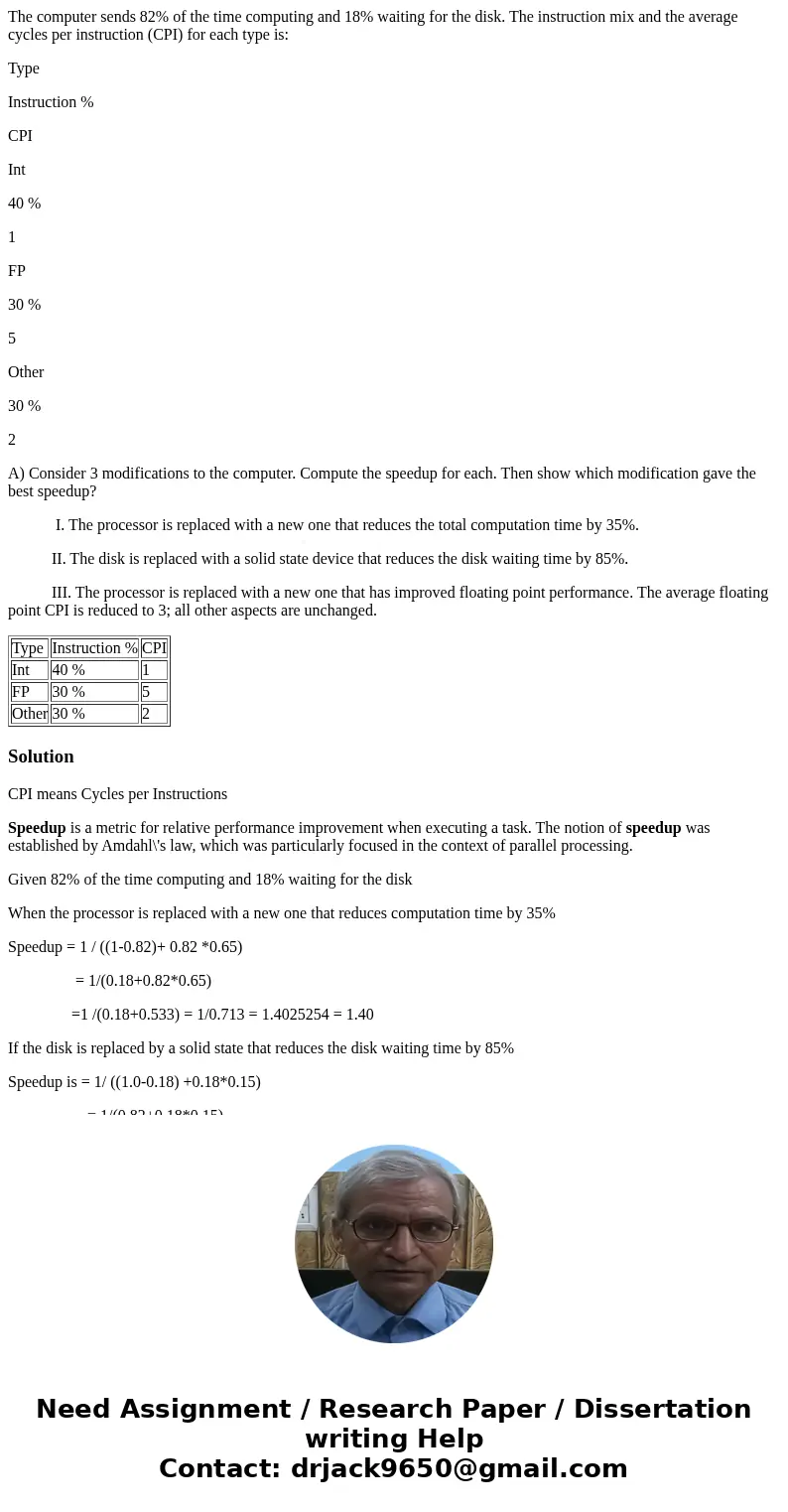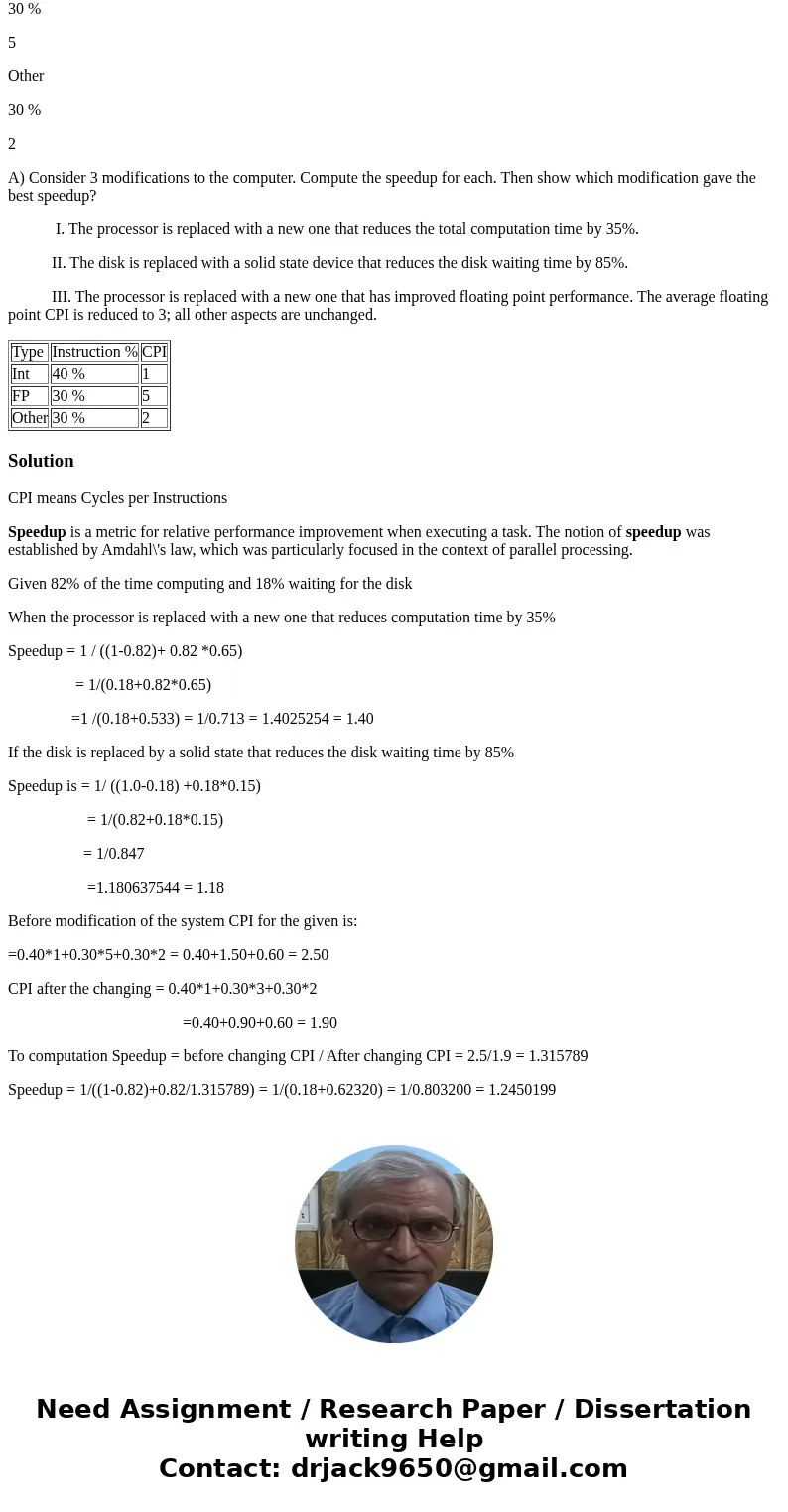The computer sends 82 of the time computing and 18 waiting f
The computer sends 82% of the time computing and 18% waiting for the disk. The instruction mix and the average cycles per instruction (CPI) for each type is:
Type
Instruction %
CPI
Int
40 %
1
FP
30 %
5
Other
30 %
2
A) Consider 3 modifications to the computer. Compute the speedup for each. Then show which modification gave the best speedup?
I. The processor is replaced with a new one that reduces the total computation time by 35%.
II. The disk is replaced with a solid state device that reduces the disk waiting time by 85%.
III. The processor is replaced with a new one that has improved floating point performance. The average floating point CPI is reduced to 3; all other aspects are unchanged.
| Type | Instruction % | CPI |
| Int | 40 % | 1 |
| FP | 30 % | 5 |
| Other | 30 % | 2 |
Solution
CPI means Cycles per Instructions
Speedup is a metric for relative performance improvement when executing a task. The notion of speedup was established by Amdahl\'s law, which was particularly focused in the context of parallel processing.
Given 82% of the time computing and 18% waiting for the disk
When the processor is replaced with a new one that reduces computation time by 35%
Speedup = 1 / ((1-0.82)+ 0.82 *0.65)
= 1/(0.18+0.82*0.65)
=1 /(0.18+0.533) = 1/0.713 = 1.4025254 = 1.40
If the disk is replaced by a solid state that reduces the disk waiting time by 85%
Speedup is = 1/ ((1.0-0.18) +0.18*0.15)
= 1/(0.82+0.18*0.15)
= 1/0.847
=1.180637544 = 1.18
Before modification of the system CPI for the given is:
=0.40*1+0.30*5+0.30*2 = 0.40+1.50+0.60 = 2.50
CPI after the changing = 0.40*1+0.30*3+0.30*2
=0.40+0.90+0.60 = 1.90
To computation Speedup = before changing CPI / After changing CPI = 2.5/1.9 = 1.315789
Speedup = 1/((1-0.82)+0.82/1.315789) = 1/(0.18+0.62320) = 1/0.803200 = 1.2450199


 Homework Sourse
Homework Sourse